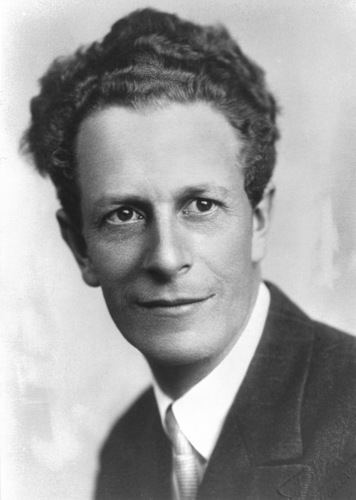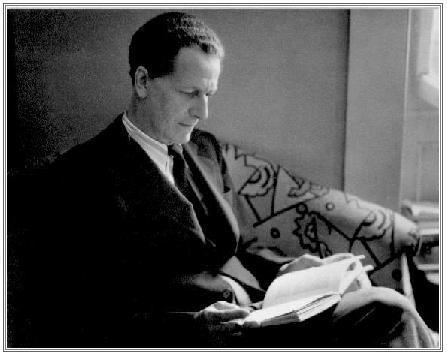Name Frank Martin Role Composer | ||
 | ||
Compositions Petite symphonie concertante, Petite symphonie concertante, Polyptyque, Polyptyque, Ballade for flute and piano, Ballade for flute and piano, Ballade for trombone and piano, Ballade for trombone and piano, Passacaille pour orgue, Passacaille pour orgue, Duo for 2 violins in G major: II Andante, Duo for 2 violins in G major: II Andante, Le vin herbe : Troisieme Partie "La Mort" - 1er Tableau (Sopranos et altos) "Les amants ne pouvaient vivre", Le vin herbe : Troisieme Partie "La Mort" - 1er Tableau (Sopranos et altos) "Les amants ne pouvaient vivre", Ballade for Trombone and Orchestra, Ballade for Trombone and Orchestra, Songs of Ariel: II "Full fathom five thy father lies", Songs of Ariel: II "Full fathom five thy father lies", Le vin herbe : Premiere Partie "Le Philtre" - 5e Tableau (Chœur) "Iseut l'aimait", Le vin herbe : Premiere Partie "Le Philtre" - 5e Tableau (Chœur) "Iseut l'aimait", Passacaille for string orchestra, Passacaille for string orchestra, 8 Preludes for Piano: I Grave, 8 Preludes for Piano: I Grave, Concerto for Violin: I Allegro Tranquillo, Concerto for Violin: I Allegro Tranquillo, Symphonie: III Scherzo Allegro molto - Trio Meno mosso, Symphonie: III Scherzo Allegro molto - Trio Meno mosso, Duo for 2 violins in G major: I Allegro, Duo for 2 violins in G major: I Allegro, Songs of Ariel: I "Come unto these yellow sands", Songs of Ariel: I "Come unto these yellow sands", Sechs Monologe aus Jedermann: VI O ewiger Gott!, Sechs Monologe aus Jedermann: VI O ewiger Gott!, Symphonie Concertante: II Adagio - Allegretto alla marcia - Vivace, Symphonie Concertante: II Adagio - Allegretto alla marcia - Vivace, Cello Concerto: III Vivace selvaggio ed aspro - Cadenza - Vivace, Cello Concerto: III Vivace selvaggio ed aspro - Cadenza - Vivace, Cello Concerto: II Adagietto, Cello Concerto: II Adagietto, Le vin herbe : Troisieme Partie "La Mort" - 7e Tableau (Chœur) "Quand le roi Marc apprit la mort des amants", Le vin herbe : Troisieme Partie "La Mort" - 7e Tableau (Chœur) "Quand le roi Marc apprit la mort des amants", Le vin herbe : Epilogue (Chœur) "Seigneurs - les bons trouveres d'antan", Le vin herbe : Epilogue (Chœur) "Seigneurs - les bons trouveres d'antan", Le vin herbe : Deuxieme Partie "La Foret du Morois" - 1er Tableau (Chœur) "Iseut est reine", Le vin herbe : Deuxieme Partie "La Foret du Morois" - 1er Tableau (Chœur) "Iseut est reine", Golgotha: Seconde Partie - Nº 8 Jesus devant Pilate, Golgotha: Seconde Partie - Nº 8 Jesus devant Pilate, Golgotha: Premiere Partie - Nº 5 Gethsemane "Voici l'Agneau divin", Golgotha: Premiere Partie - Nº 5 Gethsemane "Voici l'Agneau divin", Petite symphonie concertante - op 54: I Adagio - Allegro con moto, Petite symphonie concertante - op 54: I Adagio - Allegro con moto, 8 Preludes for Piano: IV Allegro, 8 Preludes for Piano: IV Allegro, Le vin herbe : Premiere Partie "Le Philtre" - 1er Tableau (Chœur) "Quand le temps arriva", Le vin herbe : Premiere Partie "Le Philtre" - 1er Tableau (Chœur) "Quand le temps arriva", Sechs Monologe aus Jedermann: III Ist als wenn eins gerufen hatt, Sechs Monologe aus Jedermann: III Ist als wenn eins gerufen hatt, Polyptyque for Violin and 2 Small Chamber Orchestras: IV Image de Gethsemani, Polyptyque for Violin and 2 Small Chamber Orchestras: IV Image de Gethsemani, Le vin herbe : Premiere Partie "Le Philtre" - 4e Tableau (Chœur) "De nouveau la nef cinglait vers Tintagel", Le vin herbe : Premiere Partie "Le Philtre" - 4e Tableau (Chœur) "De nouveau la nef cinglait vers Tintagel", Symphonie: II Largo, Symphonie: II Largo, Ballade for Cello and Piano, Ballade for Cello and Piano, Petite Complainte, Petite Complainte, Quatre pieces breves: III Plainte, Quatre pieces breves: III Plainte, Symphonie: IV Finale Largo - Allegro ritmico - Largo, Symphonie: IV Finale Largo - Allegro ritmico - Largo, Etudes: II Pour le pizzicato, Etudes: II Pour le pizzicato, Trois danses pour hautebois - harpe - quintette solo et orchestre a cordes: I Seguiriya: Molto moderato, Trois danses pour hautebois - harpe - quintette solo et orchestre a cordes: I Seguiriya: Molto moderato, Suite from "Der Sturm": II Prospero "Mein Ariel - hast du - der Luft nur ist", Suite from "Der Sturm": II Prospero "Mein Ariel - hast du - der Luft nur ist", Songs of Ariel: IV "You are three men of sin", Songs of Ariel: IV "You are three men of sin", Concerto for 7 Wind Instruments - Percussion & Strings: II Adagietto, Concerto for 7 Wind Instruments - Percussion & Strings: II Adagietto, 8 Preludes for Piano: VII Lento, 8 Preludes for Piano: VII Lento, Le vin herbe : Troisieme Partie "La Mort" - 6e Tableau (Chœur) "Sur la mer le vent s'etait trop faible", Le vin herbe : Troisieme Partie "La Mort" - 6e Tableau (Chœur) "Sur la mer le vent s'etait trop faible", Le vin herbe : Troisieme Partie "La Mort" - 3e Tableau (Tenors et basse) "Il manda Kaherdin en secret", Le vin herbe : Troisieme Partie "La Mort" - 3e Tableau (Tenors et basse) "Il manda Kaherdin en secret", Quatre pieces breves, Quatre pieces breves, Maria-Triptychon: II Magnificat Andante energico, Maria-Triptychon: II Magnificat Andante energico, Quatre pieces breves: I Prelude, Quatre pieces breves: I Prelude, Ballade for Flute - Piano and String Orchestra, Ballade for Flute - Piano and String Orchestra, Golgotha: Premiere Partie - Nº 1 Choeur d'introduction "Pere ! Pere !", Golgotha: Premiere Partie - Nº 1 Choeur d'introduction "Pere ! Pere !", Le vin herbe : Premiere Partie "Le Philtre" - 2e Tableau (Chœur) "La nef tranchant les vagues profondes", Le vin herbe : Premiere Partie "Le Philtre" - 2e Tableau (Chœur) "La nef tranchant les vagues profondes", Concerto for 7 Wind Instruments - Percussion & Strings: III Allegro vivace, Concerto for 7 Wind Instruments - Percussion & Strings: III Allegro vivace Similar People Daniel Reuss, Dietrich Fischer‑Dieskau, Matthias Bamert, Francis Poulenc, Benjamin Britten | ||
Frank Martin (15 September 1890 – 21 November 1974) was a Swiss composer, who lived a large part of his life in the Netherlands.
Contents
- Frank martin petite symphonie concertante
- Childhood and youth
- Works
- Orchestra
- Concerto
- Ballet
- Chamber
- Guitar
- Piano
- Organ
- Choral
- Vocal
- Opera
- References

Frank martin petite symphonie concertante
Childhood and youth
Born into a Huguenot family in the Eaux-Vives quarter of Geneva, the youngest of the ten children of a Calvinist pastor named Charles Martin, Frank Martin started to improvise on the piano prior to his formal schooling. At the age of nine he had already written a few songs without external musical instruction. At 12, he attended a performance of Johann Sebastian Bach's St. Matthew Passion and was deeply affected by it.
Respecting his parents' wishes, he studied mathematics and physics for two years at Geneva University, but at the same time was also studying piano, composition and harmony with his first music teacher Joseph Lauber (1864–1953), a Geneva composer and by that time a leading figure of the city's musical scene. In the 1920s, Martin worked closely with Émile Jaques-Dalcroze from whom he learned much about rhythm and musical theory. Between 1918 and 1926 Martin lived in Zurich, Rome and Paris. Compositions of this time show him searching for an authentic musical voice of his own.
In 1926 he established the Chamber Music Society of Geneva which, for the next ten years he conducted, as well as contributing on the clavichord and piano. During this period he was also teaching musical theory and improvisation at the Jaques-Dalcroze Institute, and chamber music at the Geneva Conservatory.
Works
The Petite Symphonie Concertante of 1944/45 made Martin's international reputation, and is the best known of his orchestral works, as the early Mass is the best known of his choral compositions, and the Jedermann monologues for baritone and piano or orchestra the best known of his works for solo voice. Other Martin pieces include a full-scale symphony (1936–1937), two piano concertos, a harpsichord concerto, a violin concerto, a cello concerto, a concerto for seven wind instruments, and a series of six one-movement works he called "ballades" for various solo instruments with piano or orchestra.
Among a dozen major scores for the theater are operatic settings of Shakespeare (Der Sturm [ The Tempest ], in August Wilhelm Schlegel's German version [1952–1955]) and Molière (Monsieur de Pourceaugnac [1960–1962]), and the satirical fairy tale La Nique à Satan (Thumbing Your Nose at Satan [1928 - 1931]). His works on sacred texts and subjects, which include another large-scale theater piece, Le Mystère de la Nativité (The Mystery of the Nativity) 1957/1959, are widely considered to rank among the finest religious compositions of the 20th century. Fellow Swiss musician Ernest Ansermet, a champion of his music from 1918 on, conducted recordings of many of Martin's works, such as the oratorio for soloists, double chorus & orchestra In Terra Pax (1944), with the Orchestre de la Suisse Romande.
Martin developed his mature style based on his personal variant of Arnold Schoenberg's twelve tone technique, starting using it around 1932, although he didn't abandon tonality. His preference for lean textures and his habitual rhythmic vehemence make his style different from the one of Schoenberg. Some of Martin's most inspired music comes from his last decade. He worked on his last cantata, Et la vie l'emporta, until ten days before his death. He died in Naarden, the Netherlands, and was buried in Geneva at the Cimetière des Rois.
